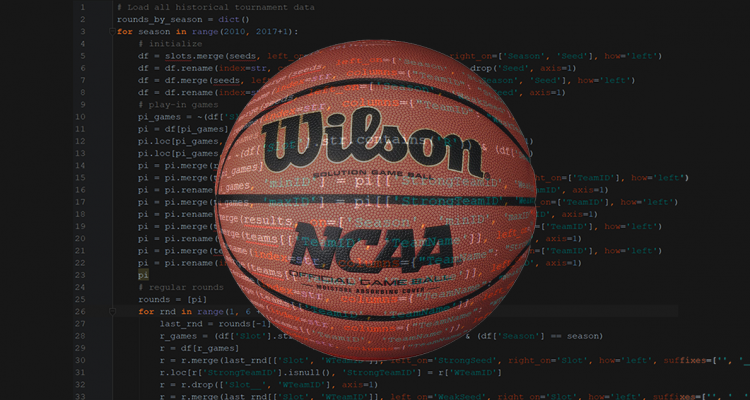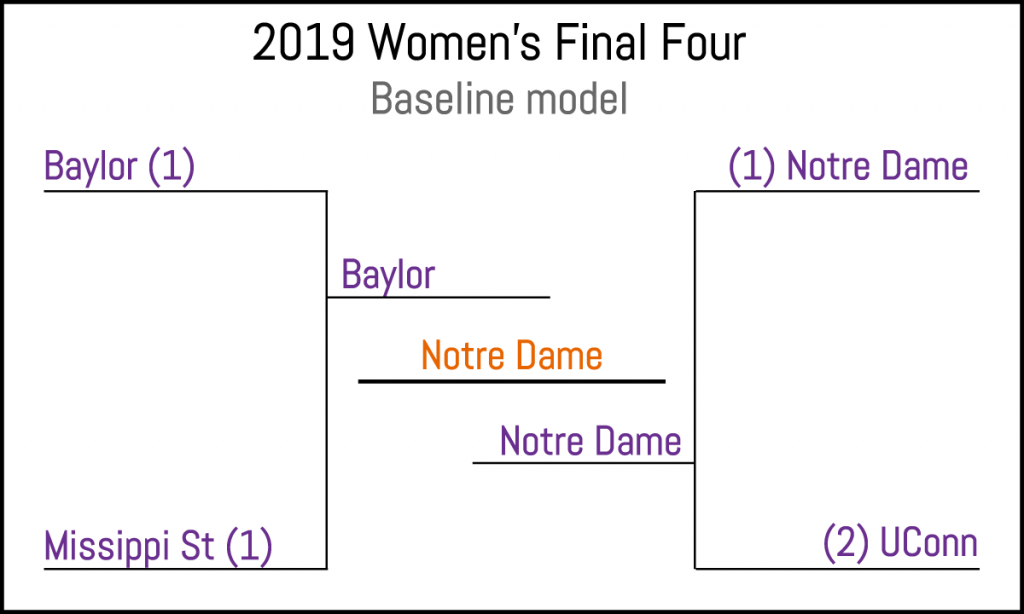By: Richard W. Sharp
We’re in it now, the most wonderful time of the year.1 Our national mania (the fun one). The mayhem of selection Monday. The mastication of mashed potatoes and machinations of mendacious Machiavellian masketmall merds.2 Woah, my brain is melting. Anyway, it’s here! The one, the only: MARCH MADNESS!!!!!!
And we’re back at it again. This year we turn the Braculator loose on the 2019 Division 1 Women’s Basketball Championship. Seeds were announced Monday, so get your bracket now and start scribbling. We’re focusing on a single model this year and using the classic LRMC model. In previous years, we have taken a poll of polls, but that data is not readily available for the women. In fact, there’s a general dearth of data with respect to the women’s game and we’ll be talking about this topic more as the tournament unfolds.
As always, we’re interested in how well the model performs against the benchmarks (chalk, RPI, and the bracketeer in chief, Obama3). And also as always a single bracket doesn’t reveal the strength of a model. Was it skill or luck? We’ll add an element of randomness to the model so that it produces a range of outcomes. We’ll measure the strength of the approach by the portion of these that crush the benchmarks.4 Spoiler alert, the model is calling it for Notre Dame all the way. Here’s sneak peek at the base model’s Final Four…
So what kind of randomness this to use this year?
We’ve tried a couple of flavors in past years, but this time we’re going to play a pretty pure version of “what if?”:
- The LRMC model is based on the point differential in every game played before the Tournament, but what if one of those shots lipped out or another caught a little more arc to avoid a block? How different would the end-of-year rankings be if the outcomes of all those games were slightly different?
- How about a lot different for a team that lives or dies by the three?
- How does your ranking shift if your star shooter is injured?
We’ll be adding a bit of luck to each game and try to estimate how differently each game could have come out. In turn, this will shift the relative rankings of the teams (more and more the more “luck” we add), giving us an idea of the range of outcomes the model can produce. And also also as always, all of our brackets will be published before the first tip off (9:00am Pacific on Friday, 3/22) on github.
So buckle up, it’s basketball time!
Notes:
1 Cite the muse.^
2 We use the best wordz (footnote to the footnote: this is how we save the world).^
3 If he has time to spare for little triviality in between addressing the pretty *!#@ serious state of affairs.^
4 Since it’s widely known that computers can see the future, it’s clear that our model will exterminate the competition. Next year we will modify the model so that it also produces its own trash talk.^


No Comments on "The Insufferable Braculator™ Strikes Again. Can your NCAA Women’s Tourney predictions beat it?"